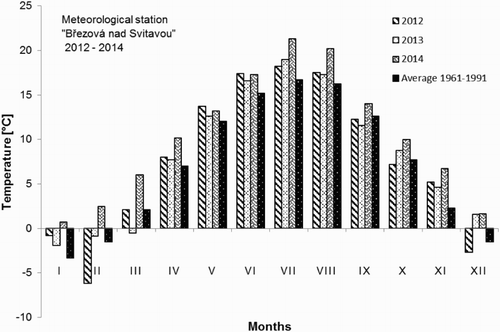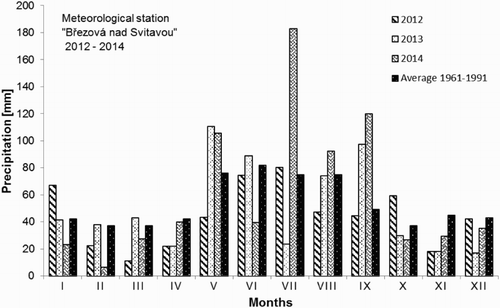ABSTRACT
This paper deals with the problem of mineral N leaching from arable lands due to the fertilization method. The influence of different doses of compost (50 and 100 Mg ha−1) and N-mineral fertilizer (35-70-140 kg N ha−1) on leaching of Nmin in a lysimetric experiment with winter wheat. The area of our interest represents the main source of drinking water for the city of Brno and its neighborhoods. To demonstrate the effect of compost and mineral nitrogen addition, the lysimetric experiment was established there. Seven variants of the experiment with different fertilization schemes were studied during two vegetation seasons (2013 and 2014), each with three repetitions. The experiment was carried out in plastic experimental containers of 0.3 m diameter and 0.5 m height. Therefore, each lysimeter was the same size and was filled with 25 kg of subsoil and 25 kg of topsoil. The highest leaching of Nmin was detected in the variant C2 where 140 kg N ha−1 was applied, in both vegetation periods (5.97 kg Nmin ha−1 after the first vegetation period and 17.02 kg Nmin ha−1 after the second vegetation period). The positive effect of compost application (individually or in combination with the mineral N) on decrease in mineral N leaching was found during both vegetation period in comparison with variant C2. The highest doses of compost (100 Mg per ha) significantly decreased the concentration of mineral nitrogen in the soil eluate in both periods (3.03 kg Nmin ha−1 and 5.79 kg Nmin ha−1, respectively), by 197% and 293% in comparison with variant C2. There is evidence that the application of compost has a positive effect on the reduction of Nmin leaching.
Introduction
Nutrient removal by leaching considerably varies between soils and depends mainly on the climate, soil type and the quantity of nutrients present in the soil in readily soluble form (Mengel & Kirkby Citation2001). Loss of nitrate nitrogen in soils due to leaching is not only one of the most important problems in agriculture farming but is also the main factor causing nitrogen pollution in aquatic environments (Xu et al. Citation2013). Under temperate climatic conditions nitrate leaching occurs mainly during winter and early spring. High N losses caused by leaching, however, may occur when the N fertilizer rate is not adjusted to the N demand of the crop and to available N in soils (Mengel & Kirkby Citation2001). Leaching of mineral N (consisting of ammonium nitrogen: and nitrate nitrogen:
) from arable land and changes in saturation from the soil sorption complex by N, P and K represent a major threat to the quality of the drinking water from underground and surface reservoirs and to the fertility of arable soils in the Czech Republic (Elbl et al. Citation2014; Kunzová & Hejcman Citation2010).
One of the main underground reservoirs of drinking water in Czech Republic is situated near the city Březová nad Svitavou – the area of our interest and protection zone of drinking water. Unfortunately, the function of this zone is ineffective which is indicated by the increasing mineral N concentrations in the drinking water from this area. A reason for such increasing mineral N concentrations in the drinking water could be that most collectors of underground drinking water are present under agricultural land. Therefore, mineral N can quickly contaminate them (Plošek et al. Citation2014).
Contamination of ground-water sources by mineral N is increasing (Sutton Citation2011). The main factors affecting the intensity of mineral N leaching can be divided in two main groups (i) Hydrological factors and (ii) Agricultural land use (Sileika et al. Citation2005). Hydrological factors consist of geological parameters and soil properties. Susceptibility to mineral N leaching is directly influenced by soil texture, soil organic matter content and soil water content. The most susceptible form of mineral N to leach from soil is nitrate N, due to its negative charge which precludes its capture by soil sorption complex. The movement of soil eluate (mineral N transfer through soil) is dependent on the percentage of the capillary pores of the total porosity as it is slowed in soil with high proportion of capillary pores (Sileika et al. Citation2005; Sutton Citation2011).
Reduction of nitrate N leaching is not a question of organic or conventional farming, but rather of introduction and use of appropriate counter-measures. This insight should guide our thinking when developing environmentally friendly and sustainable cropping systems (Kirchmann & Bergström Citation2001). Increasing soil organic matter content through the addition of organic amendments has proven to be a valuable practice for maintaining or restoring soil quality (Wander et al. Citation2002) and water quality (Oquist et al. Citation2007).
The objective of this study was to determine the effect of compost and mineral fertilizers application (individually and in combination) on leaching of mineral nitrogen from arable soil.
Material and methods
Design of the experiment
The effect of addition of different types of fertilizers was tested in a lysimetric experiment. The experiment was conducted during two vegetation seasons from September 2012 to August 2014. Temperature and precipitation were measured during the experiment. The area of our interest is the protection zone of drinking water Březová nad Svitavou, where the annual climatic average (1961–2012) is 588 mm precipitation and 7.9 °C annual air temperature (source of data: Czech Hydro-meteorological Institute). The following and show the measured monthly temperature and precipitation compared to the averages. Considerable differences were found between parameters which were measured at the experimental site (Meteorological station Březová nad Svitavou) and the long-term average (1961–2012). The highest differences were found in the distribution of precipitation (totals are the same) from May to August.
Twenty one lysimeters were used as experimental containers (3 lysimeters = replicates for each variant ) and located in the protection zone of the underground source of drinking water Březová nad Svitavou. The lysimeters were made of PVC (polyvinyl chloride). Each lysimeter was the same size (0.3 m diameter and 0.5 m height) and was filled with 25 kg of subsoil, 25 kg of topsoil (arable soil) and with compost in selected variants. Detailed information was published by Elbl et al. (Citation2013) and Plošek et al. (Citation2014). Topsoil and subsoil (fluvisol; sandy loam) were collected from a field in the area of our interest in August 2012 and prepared separately. Soil samples were sieved through a sieve (grid size of 10 mm) and homogenized. Agrochemical soil properties of topsoil/subsoil according to the Mehlich 3 method (mg kg−1): P – 142/217; K – 341/55; Ca – 3,519/2,446; Mg – 168/46 and pH/CaCL2: 5.78/6.04 in accordance to the methodology of the Central Institute for Supervising and Testing in Agriculture, published by Zbíral (Citation2002). Each lysimeter had one drain hole and a PVC hose for collecting soil solution with a hose leads into the plastic bottle. All lysimeters were buried into the ground.
Winter wheat (Golem variety) was used as a model plant to determine the effect of organic and mineral nitrogen addition on leaching of mineral N. 24 seeds in two rows of 12 seeds per one lysimeter. After each harvest, the crop residues were incorporated into the soil (up 14 days). The soil eluate (SE) was collected into plastic bottles which were located at the control shaft. Monitoring of the lysimeters has been realized according to Elbl et al. (Citation2013): The amount of the soil eluate was monitored three times per week. If an SE was found in a bottle, it was taken for the determination. Samples of SE were stored at 4 °C until analysis.
Figure 3. Schematic details of the lysimeter (Elbl et al. Citation2013).
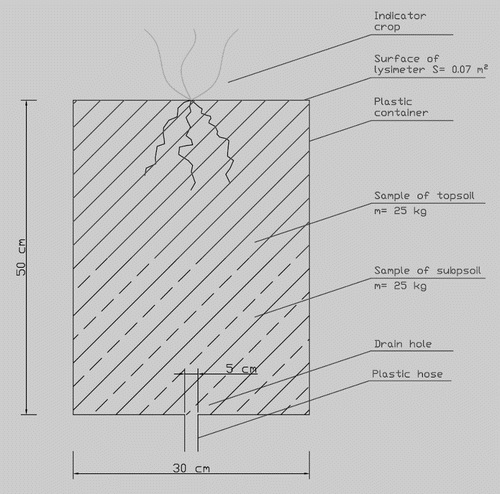
Table 1. Overview of the field experiment.
Information on the applied fertilizers and doses (): Compost (Cp; Black Dragon) samples were taken from the Central Composting Plant in Brno. The agrochemical properties of applied compost: dry matter content 55%; Ctot 168 g kg−1 (Nelson & Sommers Citation1996); Ntot 13 g kg−1 (Bremner Citation1996); C/N 12.9.
Nitrogen was applied as a liquid fertilizer DAM 390. DAM 390 (N) is a solution of ammonium nitrate and urea with an average content of 39% nitrogen (1/4 of nitrogen is in the form of ammonium, 1/4 is in the nitrate form and ½ is in the form of urea). One hundred liters of DAM 390 contain 39 kg of nitrogen. The dose of compost was 5 kg m−2 (50 Mg ha−1–100% dose of Cp) and the dose of nitrogen was 14 g m−2 (140 kg ha−1–100% dose of N) for winter wheat. The recommended dose of Cp according to CSN EN 46 5735 is 50 Mg ha−1 per 5 years in the Czech Republic, and the total dose 170 kg N (includes mineral and organic form) per hectare is determined by Government Regulation no. 262/2012 Coll. For winter wheat, which is grown in the vulnerable area (increased risk of water contamination by nitrate N) at yield level 1 = 6 Mg/ha. The area of our interest is included in the vulnerable area, therefore, the lower dose of mineral N (140 kg ha−1) was chosen. The compost was applied on the 25th of September 2012 – the recommended dose of Cp according CSN EN 46 5735 was applied. Mineral N-fertilizer (DAM 390) was always applied twice per a year into variants C2, K2 – K4. The first dose of DAM 390 was applied after reaching the BBCH 30 (leaf sheath) and the second dose after reaching the BBCH 37–39 (flag leaf). Growth stages of winter wheat were identified according Enz and Dachler (Citation1997).
Determination of mineral nitrogen loss (from arable soil)
Loss of mineral N (Nmin) from arable soil was monitored via captured SE. Concentration of Nmin was measured using the modified distillation-titration method by Muñoz-Huerta et al. (Citation2013); originally Peoples et al. (Citation1989) with Behr S 3 Steam Distillation Unit (Behr Labor Technik, Düsseldorf, Germany). Ammonium nitrogen was determined by distillation-titration method in alkaline solution after addition of MgO. Nitrate nitrogen was determined in the same manner using Devard's alloy. The value of Nmin was calculated as the sum of the detected ammonium and nitrate forms.
Determination of Nmin was performed after each sampling of the soil eluate and in each sample. The results obtained from the analyses of soil eluate were expressed in mg of Nmin (sum of and
) per m2.
Statistical analysis
Potential differences in values of leached mineral nitrogen in soil solution were identified by one-way analysis of variance (ANOVA) in combination with the Fischeŕs LSD test. All analyses were performed using Statistica 12 software (Dell Software, Round Rock, USA). The results were processed graphically in the program Microsoft Excel 2013 (Microsoft, Redmond, USA).
Results and discussion
The measured values of Nmin leaching were divided into two groups (time period). The first one was carried out from September 2012 to August 2013, and the second one from September 2013 to August 2014.
Data presented in the indicate significant differences in the leaching of Nmin for period September 2012 – October 2013 in particular variants. The highest loss Nmin was found in the variant with the application of N-mineral fertilizer – C2 (5.97 kg ha−1) and the second highest loss was observed in the variant with 50 Mg ha−1 of compost plus 100% N-mineral fertilizer – K4 (5.96 kg ha−1). These values are significantly higher in comparison with the unfertilized variant (C1) and the highest dose (100 Mg ha−1) of compost – variant K5. There were statistically significant differences between kinds and rates of fertilizers and the amount of mineral N leached from the soil. This agrees with the results of D'Hose et al. (Citation2016) who showed that application of only compost had positive effect on the utilization of the mineral N which resulted in decrease of nitrate residues concentration in the deeper layers of the soil. Although there are not significant differences among variants K1 – K2 – K3, all these variants showed significantly lower loss of Nmin compared the variant K4 (50 Mg ha−1 compost plus 100% N-mineral fertilizer), see . The highest dose of compost – 100 Mg ha−1 (variant K5) showed the lowest loss of Nmin compared with all other variants, including unfertilized control (C1) where was detected one of the highest leachate of soil eluate which may indicate leaching of excess N. Positive effect of stabile and good quality compost addition on reduction of mineral nitrogen leaching was confirmed by Escudero et al. (Citation2012) and Marofi et al. (Citation2015). Above all, according to Fiasconaro et al. (Citation2015), compost products can be beneficial, supplying nutrients for plant growth, organic matter for soil improvement (increasing the ability of soil to retain mineral N) and agents for plant disease suppression. Nitrate nitrogen content is totally higher than ammonium nitrogen content in all treatments, see the . This was expected as there had been enough time for nitrification process (Mengel & Kirkby Citation2001).
Figure 4. Quantity of mineral nitrogen (mean ± SD; n = 3) in soil eluate during the first vegetation season (September 2012- October 2013Different letters indicate significant differences in loss of mineral N (Fischer LSD at level of P < 0.05).
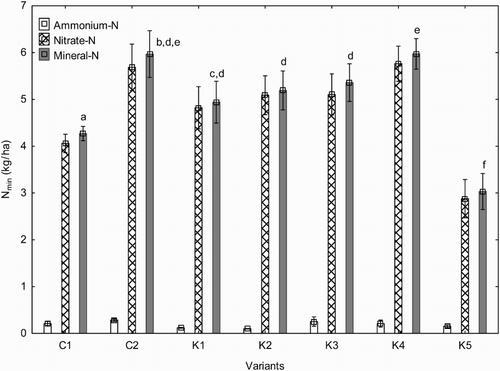
In the amount of soil eluate from the first growing period (see ) there were significant differences between controls variants (C1 and C2) and variants with addition of compost (K1 – K5). Consider data which are presented by and . These data indicate possible relationship between loss of mineral N and the amount of entrapped soil eluate. Weather conditions were different for the both growing season. and indicate fluctuations in the weather of the protection zone of drinking water Březová nad Svitavou. In the first period from September 2012 – August 2013 soil eluate leached in February, March, April and June, corresponding to the distribution of temperature and precipitation in this growing period (see and ). The highest loss of mineral N was found in variant C2 (fertilized only by mineral N) and high concentration of mineral N in soil eluate was detected in variant C1 (unfertilized). Above all the highest amount of entrapped soil eluate was found there. These variants were without addition of organic matter which positively affected soil water retention (Romero et al. Citation2016) and the amount of leached soil eluate had direct influence on loss of mineral N from the above variants. Furthermore, compost addition had a positive effect on water retention in soil (Diaz et al. Citation2007), which was reflected in variants K1 – K5. The lowest loss of mineral nitrogen was detected in the variant with increased dose of compost (K5). The addition of compost increased the decomposition rate after input of fresh organic matter to soil, this is often supposed to result from an increase microbial activity and in turn the rate of soil carbon mineralization, i.e. a priming effect of organic matter (Fontaine et al. Citation2003).
Table 2. The amount of soil eluate (mean ± SD; n = 3) collected from lysimeters during the first vegetation period.
The data presented in represent the amount of soil eluate in the second growing period from September 2013 – August 2014. The highest leaching of soil eluate was detected in the variant with only mineral N (C2) and the lowest in the variant with the increased dose of compost (K5). In the second period soil eluate leached in September, November, December and February. The reason for such differences between variants with addition of compost and with only mineral fertilizer was suggested by Diaz et al. (Citation2007) and D'Hose et al. (Citation2014) to be due to the positive effect of compost addition on the water infiltration and water retention in soil.
Table 3. The amount of soil eluate (mean ± SD; n = 3) collected from lysimeters during the second vegetation period.
Higher concentrations of mineral N were measured in the second period (from September 2013 to October 2014) than in the first one (). We conclude that these values were influenced mainly by the sum of precipitation. Consider the data presented in , the highest rainfall was detected in July – September 2014. The relationship between the amount of water which is infiltrated into the soil and the movement of mineral N from the upper part of the soil into lower layers was reported by Sepaskhah and Tafteh (Citation2012).
Figure 5. Quantity of mineral nitrogen (mean ± SD; n = 3) in soil eluate during the second vegetation period (September 2013 – October 2014). Different letters indicate significant differences in loss of mineral N (Fischer LSD test at level of P < 0.05).
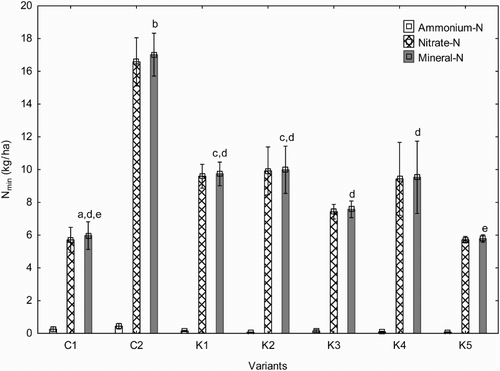
Significantly highest loss of mineral N was observed in variant fertilized with only mineral nitrogen – C2 again (17.02 kg ha−1). Leclerc et al. (Citation1995) noted in their lysimeter study that overall amount of nitrates leached under crops was in following decreasing order: mineral NPK, manure compost, urban compost, brushwood compost. There were no differences among all variants with lower dose of compost and N-mineral fertilizer (K1 – K4), . The lowest leached nitrogen in our experiments were detected in variants without fertilization – C1 (6.14 kg ha−1) and with the highest dose of compost – K5 (5.79 kg ha−1) which confirmed the results from the first vegetation period. Composts contain a large amount of humus substances (soil organic carbon) which support formation of soil structure, thus improving water retention (Habart et al. Citation2015). Soil organic carbon preservation is important for preserving soil productivity (Seremesic et al. Citation2011). The incorporation of straw into soils may decrease the nitrate concentration in soils considerably (Gök and Ottow Citation1988) and thus also inorganic N flows into the microbial biomass. It is well known that compost amendment improves physical, chemical and biological properties of soils and there is evidence that the application of organic amendments (organic matter) to soil could also reduce soil mineral nitrogen loses (Donn et al. Citation2014; Fiasconaro et al. Citation2015; Vaughan et al. Citation2011). Organic fertilization is necessary for stabilizing or increasing of soil fertility (Marschner Citation2002) and increasing of organic matter content in soil is also good practise for avoiding nutrient leaching from the soil (Jouquet et al. Citation2011).
Notes on contributors
Ing. Lukáš Pošek is a researcher at the ASEKOL Company, Prague, Czech Republic. His research includes waste management, the influence of compost and other biodegradable waste application on soil properties, and the leaching of mineral nitrogen from agricultural land in the protection zone of drinking water source in Březová nad Svitavou.
Ing. Jakub Elbl is an agronomist specialist at the Czech section of Spearhead Company, UK, and an external academic researcher at the Department of Geology and Pedology, Mendel University in Brno, Czech Republic. His research is focused on the effect of drought on soil microbial activities and microbial interaction in rhizosphere soil. Furthermore, he deals with plant nutrition and testing of technologies for variable-rate nitrogen application on agricultural land.
Prof. Ing. Tomáš Lošák, Ph.D. is a professor of Agrochemistry and Plant Nutrition at the Department of Environmentalistics and Natural Resources, Mendel University in Brno, Czech Republic. He is interested in different topics about plant nutrition and fertilization of arable crops, vegetables, vine, and orchards; the use of di
Prof. Ing. Stanislav Kužel, C.Sc. is a professor of Nutrition and Fertilizing of Plants at the Department of Agroecosystems at the Faculty of Agriculture of the University of South Bohemia in České Budějovice, Czech Republic. His research and pedagogy focus on the field of nutrition and fertilization of plants, soil sciences, waste management, soil hygiene, biomass, biofuels, the transformation of soil organic matter in relation to soil phosphate regime, and aerobic and anaerobic digestion of biomass. He is a co-author of the Czech and European patents concerning the influence of elicitors on agricultural crops in terms of increasing their yield and quality. He studies the complex use of biomass as a raw material for chemical and energy industries as part of its non-waste treatment in biorefineries.
Ing. Antonín Kintl is a researcher at the Research Institute for Fodder Crops, Ltd., Troubsko, Czech Republic, where he deals with the protection of agricultural land against soil erosion, and monitoring of soil health and quality.
Ing. David Juřička, Ph.D. is a researcher at the Department of Geology and Pedology, Mendel University in Brno. His research focuses on monitoring the relationship between the state of soil environment and the structure of the vegetation cover of soil. Above all, he deals with the preparation of maps for soil sampling and statistical analysis of data from field experiments.
Assoc. Prof. Jindřich Kynický, Ph.D. is the head of the Department of Geology and Pedology, Mendel University in Brno. His research focuses on the development of new geomodels and exploration methods for the localization of strategic raw materials in carbonatitic rocks. Above all, he is a co-author of international projects and publications.
Prof. A. Martensson is a professor at the Department of Soil and Environment, Swedish University of Agricultural Sciences in Uppsala, Sweden. Her research focuses on biologically/chemically mediated nutrient cycling in relation to plant fitness and productivity, which is of the greatest importance for crop production of high quality. The topics recently covered have concerned nutrient supply in organic production. She is Editor-in-Chief for Acta Agriculturae Scandinavica Section B Soil and Plant Science, and General Secretary for Nordisk Jordbruksforskares Förening (NJF).
Ing. Martin Brtnický is an assistant professor at the Department of Geology and Pedology, Mendel University in Brno. The main field of his research is the protection of soil against degradation by soil erosion. Moreover, his research includes monitoring the impact of mineral fertilizers’ application on the stability of soil aggregates. He has also solved national grant projects dealing with soil protection, transformation of organic matter in soil and leaching of nutrients from soil.
Additional information
Funding
References
- Bremner JM. 1996. Nitrogen total. In: Sparks DL, editor. Methods of soil analysis, part 3: chemical methods. Madison (WI): Soil Science Society of America. Chapter 37, p. 1085–1123.
- D’Hose T, Cougnon M, De Vliegher A, Vandecasteele B, Viaene N, Cornelis W, Van Bockstaele E, Reheul D. 2014. The positive relationship between soil quality and crop production: a case study on the effect of farm compost application. Appl Soil Ecol. 75:189–198. doi: 10.1016/j.apsoil.2013.11.013
- D’Hose T, Ruysschaert G, Viaene N, Debode J, Nest TV, Vaerenbergh V, Cornelis W, Willekens K, Vandecasteele B. 2016. Farm compost amendment and non-inversion tillage improve soil quality without increasing the risk for N and P leaching. Agric Ecosyst Environ. 225:126–139. doi: 10.1016/j.agee.2016.03.035
- Diaz LF, De Bertoldi M, Bidlingmaier W, Stentiford E. 2007. Compost science and technology. Boston, MA: Elsevier.
- Donn S, Wheatley RE, McKenzie MB, Loades KW, Hallet PD. 2014. Improved soil fertility from compost amendment increases root growth and reinforcement of surface soil on slopes. Ecol Eng. 71:458–465. doi: 10.1016/j.ecoleng.2014.07.066
- Elbl J, Kurt JF, Záhora J, Plošek L, Kintl A, Přichystalová J, Hynšt J, Dostálová L, Zákoutská K. 2013. Leaching of mineral nitrogen and phosphate from rhizosphere soil stressed by drought and intensive rainfall. World Acad Sci Eng Technol. 7:324–330.
- Elbl J, Plošek L, Kintl J, Prichystalova J, Záhora J, Friedel JK. 2014. The effect of increased doses of compost on leaching of mineral nitrogen from arable land. Pol J Environ Stud. 23:667–703.
- Enz M, Dachler C. 1997. Compendium of growth stage identification keys for mono- and dicotyledonous plants: extended BBCH scale. Germany: German Federal Biological Research Centre for Agriculture and Forestry (BBA).
- Escudero A, González-Arias A, Hierro O, Pinto M, Gartzia-Bengoetxea N. 2012. Nitrogen dynamics in soil amended with manures composted in dynamic and static systems. J Environ Manage. 108:66–72. doi: 10.1016/j.jenvman.2012.04.046
- Fiasconaro ML, Antolín MC, Lovato ME, Gervasion S, Martín CA. 2015. Study of fat compost from dairy industry wastewater as a new substrate for pepper (Capsicum annuum L. (crop). Sci Hortic. 193:359–366. doi: 10.1016/j.scienta.2015.07.038
- Fontaine S, Mariotti A, Abbadie L. 2003. The priming effect of organic matter: a question of microbial competition? Soil Biol Biochem. 35:837–843. doi: 10.1016/S0038-0717(03)00123-8
- Gök M, Ottow JCG. 1988. Effect of cellulose and straw incorporation in soil on total denitrification and nitrogen immobilization at initially aerobic and permanent anaerobic conditions. Biol Fertil Soils. 5:317–322. doi: 10.1007/BF00262139
- Habart J, Tlustoš P, Hanč A, Vaněk V. 2015. Composting – important tool for waste recovery and soil fertility assurance. In: Proceedings of 21st International Conference “Reasonable use of fertilizers”, 2015 Nov 26. Praha, CZE: ČZU Praha; p. 42–49.
- Jouquet EP, Bloquel E, Thu Doan T, Ricoy M, Orange D, Rumpel C, Tran Duc T. 2011. Do compost and vermicompost improve macronutrient retention and plant growth in degraded tropical soils? Compos Sci Util. 19:15–24. doi: 10.1080/1065657X.2011.10736972
- Kirchmann H, Bergström L. 2001. Do organic farming practices reduce nitrate leaching? Communn Soil Sci Plant Anal. 32:997–1028. doi: 10.1081/CSS-100104101
- Kunzová E, Hejcman M. 2010. Yield development of winter wheat over 50 years of nitrogen, phosphorus and potassium application on greyic Phaeozem in the Czech Republic. Eur J Agron. 33:166–174. doi: 10.1016/j.eja.2010.05.002
- Leclerc B, Georges P, Cauwel B, Lairon D. 1995. A five year study on nitrate leaching under crops fertilised with mineral and organic fertilisers in lysimeters. Biol Agric Hortic Int J Sustainable Prod Syst. 11:301–308. doi: 10.1080/01448765.1995.9754714
- Marofi S, Shakarami M, Rahimi G, Ershadfath F. 2015. Effect of wastewater and compost on leaching nutrients of soil column under basil cultivation. Agric Water Manage. 158:266–276. doi: 10.1016/j.agwat.2015.05.007
- Marschner H. 2002. Mineral nutrition of higher plants, 2nd ed. London: Academic Press.
- Mengel K, Kirkby EA. 2001. Principles of plant nutrition, 5th ed. London: Kluwer Academic Publishers.
- Muñoz-Huerta RF, Guevara-Gonzalez RG, Contreras-Medina LM, Torres-Pacheco I, Prado-Olivarez J, Ocampo-Velazquez RV. 2013. A review of methods for sensing the nitrogen status in plants: advantages, disadvantages and recent advances. Sensor. 13:10823–10843. doi: 10.3390/s130810823
- Nelson DW, Sommers LE. 1996. Total carbon, organic carbon, and organic matter. In: Sparks DL, editor. Methods of soil analysis, Part 3: chemical methods. Madison (WI): Soil Science Society of America. Chapter 35, p. 961–1011.
- Oquist KA, Strock JS, Mulla DJ. 2007. Influence of alternative and conventional farming practices on subsurface drainage and water quality. J Environ Qual. 36:1194–1204. doi: 10.2134/jeq2006.0274
- Peoples MB, Faizah AW, Rerkasem B, Herridge DF. 1989. Methods for evaluating nitrogen fixation by modulated legumes in the field. Canberra: Australian Centre for International Agricultural Research.
- Plošek L, Hynšt J, Záhora J, Elbl J, Kintl A, Charoušová I, Kovacsová S. 2014. Mineral nitrogen retention, nitrogen availability and plant growth in the soil influenced by addition of organic and mineral fertilizers - lysimetric experiment. World Acad Sci Eng Technol. 8:741–745.
- Romero E, Garnier J, Billen G, Peters F, Lassaletta L. 2016. Water management practices exacerbate nitrogen retention in Mediterranean catchments. Sci Total Environ. 573:420–432. doi: 10.1016/j.scitotenv.2016.08.007
- Sepaskhah AR, Tafteh A. 2012. Yeild and nitrogen leaching in rapeseed field under different nitrogen rates and water saving irrigation. Agric Water Manag. 112:55–62. doi: 10.1016/j.agwat.2012.06.005
- Seremesic S, Milosev D, Djalovic I, Zeremeski T, Ninkov J. 2011. Management of soil organic carbon in maintaining soil productivity and yield stability of winter wheat. Plant Soil Environ. 57:216–221.
- Sileika AS, Gaigalis K, Kutra G, Smitiene A. 2005. Factors affecting N and P losses from small catchments (Lithuania). Environ Monit Assess. 102:359–374. doi: 10.1007/s10661-005-6033-3
- Sutton MA. 2011. The European nitrogen assessment: sources, effects and policy perspectives. New York: Cambridge University Press.
- Vaughan SM, Dalal RC, Harper SM, Menzies NW. 2011. Effect of fresh green waste compost on mineral nitrogen, nitrous oxide and carbon dioxide from a Vertisol. Waste Manage. 31:1720–1728. doi: 10.1016/j.wasman.2011.03.019
- Wander MM, Walter GL, Nissen TM, Bollero GA, Andrews SS, Cavanaugh-Grant DA. 2002. Soil quality: science and process. Agron J. 94:23–32. doi: 10.2134/agronj2002.0023
- Xu L, Niu H, Xu J, Wang X. 2013. Nitrate-nitrogen leaching and modelling in intensive agriculture farmland in China. Sci World J. 10:1–10.
- Zbíral J. 2002. Analysis of soils I. Unified techniques [in Czech]. Brno: Central Institute for Supervising and Testing in Agriculture.

